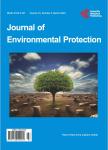Determining Environmental Impacts for Sensitive Species: Using Iconic Species as Bioindicators for Management and Policy
Determining Environmental Impacts for Sensitive Species: Using Iconic Species as Bioindicators for Management and Policy作者机构:1Consortium for Risk Evaluation with Stakeholder Participation Vanderbilt University Nashville USA 2Department of Civil and Environmental Engineering and CRESP Vanderbilt University Nashville USA 1Consortium for Risk Evaluation with Stakeholder Participation Vanderbilt University Nashville USA 2Department of Civil and Environmental Engineering and CRESP Vanderbilt University Nashville USA 1Division of Life Sciences Rutgers University Piscataway USA 2Environmental and Occupational Health Sciences Institute Rutgers University Piscataway USA 3Consortium for Risk Evaluation with Stakeholder Participation Vanderbilt University Nashville USA 1Environmental and Occupational Health Sciences Institute Rutgers University Piscataway USA 2Consortium for Risk Evaluation with Stakeholder Participation Vanderbilt University Nashville USA 3Environmental and Occupational Medicine Rutgers-Robert Wood Johnson Medical School Piscataway USA Conserve Wildlife Foundation of New Jersey Greenwich USA Endangered and Nongame Species Program Department of Environmental Protection Trenton USA.
出 版 物:《Journal of Environmental Protection》 (环境保护(英文))
年 卷 期:2013年第4卷第8期
页 面:87-95页
学科分类:1002[医学-临床医学] 100214[医学-肿瘤学] 10[医学]
主 题:Assessment Bioindicators Contaminants Endpoints Management Public Policy Fish Birds
摘 要:Environmental assessment of impacts, management, and policy are important aspects of protection of human health and the environment. Assessing the impacts of human activities requires selection of bioindicator species that can be used to assess, manage, and develop public policies that ensure ecosystem integrity, and therefore sustainability of social, cultural, and economic systems. With the use of Chinook Salmon (Oncorhynchus tshawytscha), Pacific Cod (Gadusmacrocephalus), Mallard (Anas platyrhynchos), and Red Knot (Calidris canutus rufa), we explore assessment and measurement endpoints, and their relationship to management and development of public policy. This combination of fish and birds provides a diversity of life histories, ecosystem roles, human values, and resource use to explore their use as bioindicators and endpoints. It also allows examination of 1) conservation and protection of species and biodiversity, 2) protection of ecosystems, 3) provision of goods and services, and 4) societal well-being.



